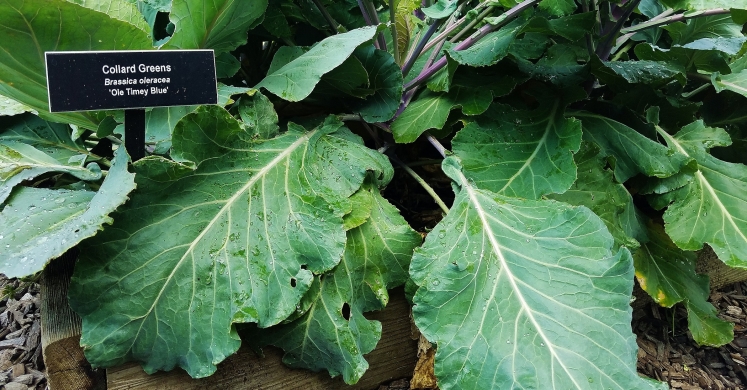Blog

#bioPGH Blog: Late Summer Veggies
 A resource of Biophilia: Pittsburgh, #bioPGH is a weekly blog and social media series that aims to encourage both children and adults to reconnect with nature and enjoy what each of our distinctive seasons has to offer.
A resource of Biophilia: Pittsburgh, #bioPGH is a weekly blog and social media series that aims to encourage both children and adults to reconnect with nature and enjoy what each of our distinctive seasons has to offer.
As the back-to-school prep begins and we start the countdown to acceptable consumption of all things pumpkin spice (September 1…of course), many of us ask ourselves the same question that we do this time every year: where did the summer go? Through all the busyness of the season, many of us miss the chance to enjoy a true delight of summer—growing a garden, but there is still time! This is the perfect time of year to start planting late summer vegetables. Even if you’re a novice gardener, many of the crops planted in late summer are relatively easy to grow, can be planted in either a container or a bed, and are still delicious to enjoy. Let’s talk to Mike Bechtel, display horticulturalist here at Phipps and master of the Edible Garden, to get the scoop on late summer vegetable gardening. *If you don’t have either a yard or balcony, not to worry! See Connecting to the Outdoors Tip below.
“Planting in late summer is playing a game of not too hot but still enough sunlight. It’s really a race with the sun,” Mike explains, referring to shortening day lengths of early fall. Radishes, carrots, collard greens, kale, and many others (check out this website for an idea of timing) can be planted in late summer and still grow a crop before either the first frost or ground-freeze. If August is still busy before the kids go back to school, some things can be planted all the way into early fall.
“Something like spinach is great to plant even as late as September because it likes the cool temperatures,” Mike notes.
You can find seeds or seedlings at many garden centers or home improvement stores, but there are also heirloom seed exchanges online (heirloom varieties are typically derived from older seed caches, and are a bit different from what you might find at the grocery store). Mike suggested both Baker’s Creek Heirloom Seeds and Seed Savers Exchange.
After you decide what to plant, you have a few options where to grow your veggies. For a garden bed, you will just want to add a layer of compost above the soil to provide some nutrients. Even if you don’t have a yard, you don’t have to miss out, though Mike admits that growing crops in containers will always be a bit more difficult. If you are planting in a container, you will just want to add a layer of compost above the potting soil, and then add supplemental compost to the top of pot about once a week to make sure the soil still has nutrients. In both cases, the compost will not only keep the soil nutrient-laden, but it will help retain water for the growing plants. Compost can be easily bought at a garden center, landscape center, or most home improvement stores in the summer.
When you are ready to plant, you will want to look up the specific instructions on planting depth for your chosen crop (this is often just on the back of the seed packet), and keep in mind how close together your seeds can be planted. For example, if you were to grow carrots, the seeds only need to be a quarter to half inch deep and should be planted two to three inches apart.
One important point to growing late summer veggies: do be mindful of watering. Late summer weather can still be quite hot, and you will want to be sure that your soil is never dry. The compost layer will help keep the soil damp, but do be sure to water faithfully, especially if your garden is in full sun.
Last but not least, be sure that you have fun! Growing produce from seeds to plants to the dinner table is a rare joy in a world of supermarkets and busy schedules, and it’s a wonderful chance to build memories as a family if you can get the kids involved—little ones are especially proud of providing food for the family with veggies they have planted themselves!
Connecting to the Outdoors Tip: Many of us don’t have yards or balconies, but that doesn’t mean we can’t plant and grow things! Pittsburgh has a number of community gardens around the city, and the managers of those gardens are great resources for getting started with a bed of your own. Check out Grow Pittsburgh’s listing of community gardens, and have fun gardening!
Continue the Conversation: Share your nature discoveries with our community by posting to Twitter and Instagram with hashtag #bioPGH, and R.S.V.P. to attend our next Biophilia: Pittsburgh meeting.

Heirloom onions from the Phipps Edible Garden. Happy planting!
Resources
Penn State Extension: Vegetable Gardening
University of Minnesota Extension: Planting Vegetables in Midsummer for Late Fall Harvest
Photo Credits: All photos by Maria Wheeler-Dubas
